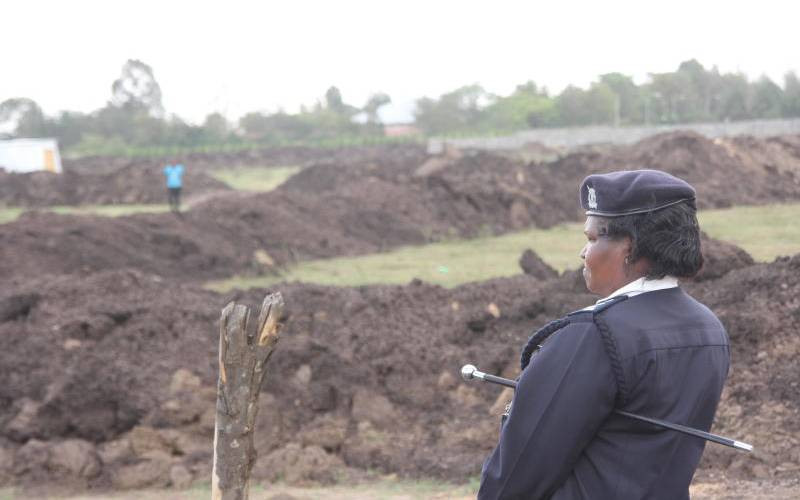By Ayoki Onyango
Medical experts now link influenza/flu and pneumonia and say pneumococcal infection is the major cause of mortality during flu epidemics. It is also believed Kenyans underestimate the economic burden of flu/pneumonia infections, which include costs of hospitalisation, treatment and lost days of work and school or education.
Flu is also different from common cold. Flu can sometimes be a life threatening disease. The disease brings the risk of complications, especially for individuals in high-risk groups. The World Health Organisation (WHO) says that every year flu associated complications kills about 500,000 people globally.
The disease spreads like bushfire around the world in seasonal epidemics and imposes a considerable economic burden in form of hospital and other health care costs and lost productivity. In developing countries people are not well informed about the negative impact of influenza and its epidemiology.
Vaccination against flu once a year is recommended as the best option to prevent flu infections and its complications, including death. This came up at a recent workshop marking the launch of this season’s flu vaccine brand named Vaxigrip. Vaccinations are recommended for persons of any age, and considered to be at risk.
They include children, and patients with chronic heart, lung or kidney conditions and those with metabolic diseases such as diabetes and other conditions responsible for weak body immune system like HIV, known as immosuppression.
Experts say vaccination reduces mortality rate by 80 per cent among elderly persons and 90 per cent in children. Vaccinations also reduce risk of hospitalisation, for heart disease, while cerebrovascular decreases mortality rates from all causes.
The last pandemic
Studies have shown that flu vaccines are effective in reducing influenza morbidity in among healthy adults. Doctors advise that the vaccine be administered before the start of the flu season, which starts in April up to March the following year. They also say injection is given in the upper arm, except in infants.
A single dose of vaccine is appropriate for all groups. This season’s flu vaccine is now formulated to protect against HINI, which is responsible for swine flu and deaths during the last pandemic.
And, for pneumonia it is believed that increasing vaccination could halt and control deaths from pneumonia, especially among children and elderly persons.
Cases for both viral pneumonia and bacterial pneumonia have increased since WHO declared flu a pandemic two years ago. In fact doctors say flu/influenza condemns but pneumonia executes.
During the 1918–19 pandemic the principal cause of deaths was bacterial pneumonia after influenza infections. The range of infections caused by pneumococcal disease include pneumonia, invasive disease such as meningitis and none invasive infections such as otitis media. The rate of infections in children aged two to 12 years and in those aged over 50 years is so high.
As one grows older, the immune system becomes weakened thus the high rate of infections from pneumonia. So it can be said with certainty that most of those who died of swine flu HINI since the disease set in two years ago were as a result of pneumococcal infections.
As a result the US Advisory Committee on Immunisation Practices has now recommended vaccination of children from six months to 12 years and adults aged 60 years and above against pneumonia to avoid deaths from flu. Kenya should borrow a leaf from the US and other developed nations. According to experts, influenza creates a dangerous pathway for bacterial pneumonia infections and possible deaths.
Stay informed. Subscribe to our newsletter
Five-year protection
There are two types of pneumococcal diseases — viral pneumonia, which has influenza and respiratory syntial virus and bacterial pneumonia which has Haemophilus Influenza Type b (Hib), and meningitis". As pneumococcal and influenza are major causes of pneumonia the best thing to do now is get vaccination against both flu and pneumonia to ensure maximum protection.
Many deaths in Kenya could be as a result of co-infections of pneumonia and flu.
Pneumococcal infections have about 80 strains. However, only 23 are responsible for 90 per cent severe cases and deaths. It is for this reason Sanofi Pasteur developed a vaccine known as Pneumo 23, which offers protection against 23 strains of severe pneumococcal infections. It offers protection for five years.
—The writer is a medical journalist and law student.
 The Standard Group Plc is a
multi-media organization with investments in media platforms spanning newspaper
print operations, television, radio broadcasting, digital and online services. The
Standard Group is recognized as a leading multi-media house in Kenya with a key
influence in matters of national and international interest.
The Standard Group Plc is a
multi-media organization with investments in media platforms spanning newspaper
print operations, television, radio broadcasting, digital and online services. The
Standard Group is recognized as a leading multi-media house in Kenya with a key
influence in matters of national and international interest.
 The Standard Group Plc is a
multi-media organization with investments in media platforms spanning newspaper
print operations, television, radio broadcasting, digital and online services. The
Standard Group is recognized as a leading multi-media house in Kenya with a key
influence in matters of national and international interest.
The Standard Group Plc is a
multi-media organization with investments in media platforms spanning newspaper
print operations, television, radio broadcasting, digital and online services. The
Standard Group is recognized as a leading multi-media house in Kenya with a key
influence in matters of national and international interest.





